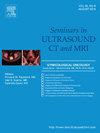An Echocardiographic Approach for the Management of Shock: The Subcostal to Apical, Respiratory to Parasternal–Cardiac to Respiratory, Aortic to Stomach Protocol
Abstract
Point of care ultrasound has become an integral part of critical care medicine, particularly for recognizing shock etiologies and guiding management. Most of the current ultrasonography guided shock protocols have been tailored towards a qualitative assessment of patients on presentation with shock. Unfortunately, the evolving nature of shock, particularly in the face of resuscitation and physiologic changes, demands a more sophisticated approach. This manuscript serves to present a comprehensive algorithm called the transthoracic Subcostal To Apical, Respiratory to paraSternal and transesophageal Cardiac to Respiratory, Aortic to StomacH ultrasonographic evaluations for the assessment of shock. This protocol is better suited for the critically ill patient in its ability to move beyond pattern recognition and focus on monitoring shock states from their presentation through their evolution. Not only is importance placed on the sequence of the exam, but also the identification of signs of chronic disease, the early incorporation of pulmonary evaluation, and the role for transesophageal imaging in critically ill patients with difficult surface imaging. Given the broad capabilities of bedside ultrasound, the Subcostal To Apical, Respiratory to paraSternal-Cardiac to Respiratory, Aortic to StomacH protocol serves as a multifaceted algorithm allowing for a nuanced and dynamic approach for the resuscitation of critically ill patients in shock.

 求助内容:
求助内容: 应助结果提醒方式:
应助结果提醒方式:


